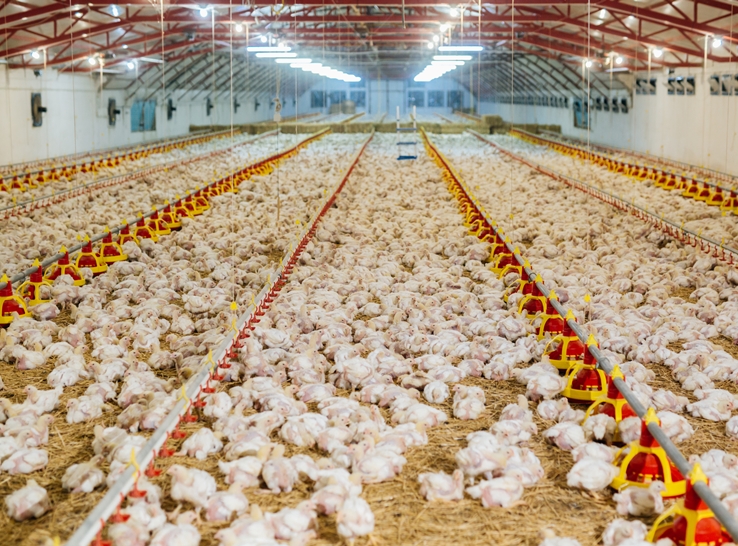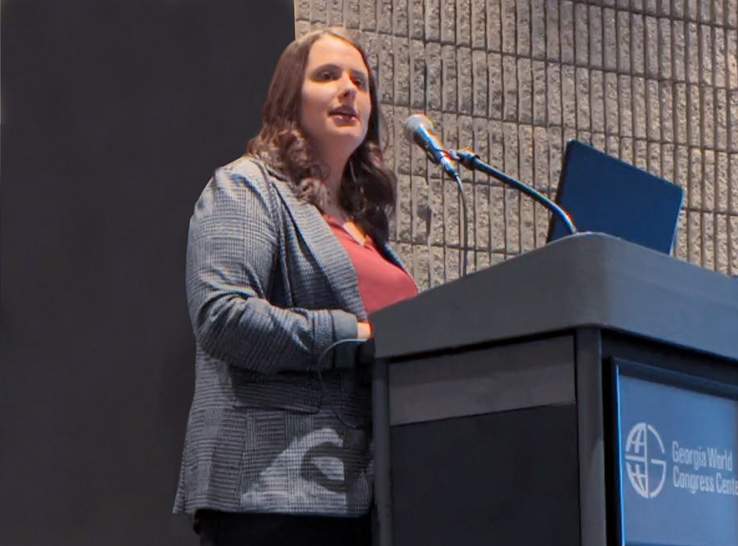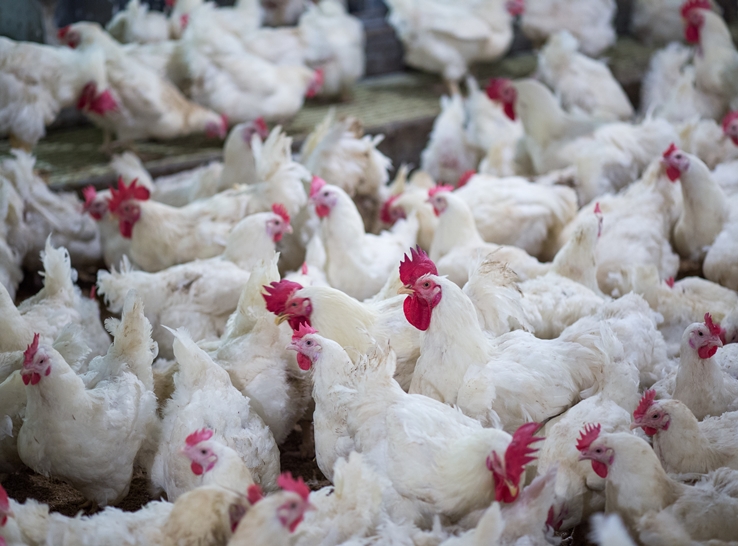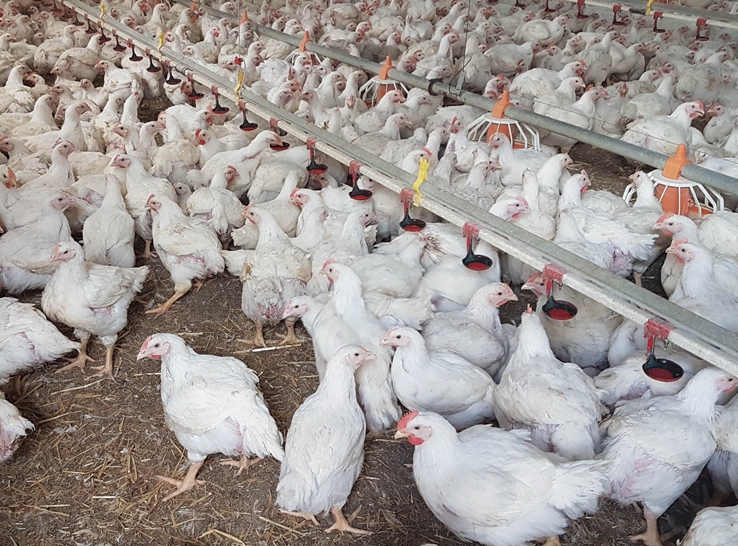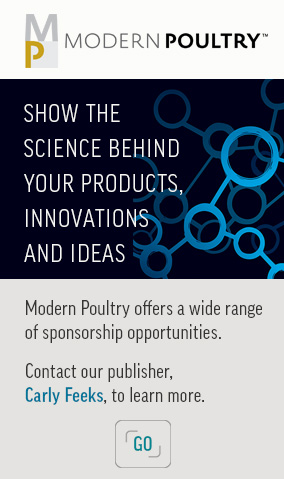Since the US long ago shifted from an agrarian to an urban society, the gap in knowledge and understanding of animal agriculture has widened dramatically. Today, less than 2% of the US population is involved in agriculture of any kind, which creates an opportunity for myths and misinformation to flourish.
Activists of all stripes have taken advantage of that gap, painting animal agriculture, including modern poultry production, and research in a negative light. Most of these groups believe there is no way to ethically and responsibly raise animals for food.
“For them, it’s about ending the consumption of animal protein,” said Hannah Thompson, president and chief executive officer of Animal Agriculture Alliance (the Alliance), in her keynote address at the 2024 International Poultry Scientific Forum.
The Alliance is a nonprofit organization working to safeguard animal agriculture’s future by communicating accurate information on topics such as animal rights, responsible antibiotic use and sustainability. It has about 400 members and tracks more than 200 organizations that are targeting animal agriculture.
Thompson noted that the top 40 most active organizations generate $800 million annually, collaborate on projects and exchange staff and volunteers.
Activists remain a small but very loud segment of the US population, with their targets set on farmers, restaurants, retail brands and even researchers and scientists.
Animal welfare versus animal rights
Animal activists are the most active segment and have achieved the most success with actions such as California’s Proposition 12 resolution, which requires certain housing specifications for egg-laying hens, veal calves and gestating swine for all related products sold in California, regardless of their state of origin.
Although the term animal welfare is commonly used, it’s important to distinguish between animal welfare and animal rights. “Animal welfare is a scientific concept,” Thompson noted. “It is the idea of continuous improvement and measuring animals’ welfare outcomes. That is a main focus for our industry.”
Animal rights is about securing rights for animals that are equal to those of humans. “It’s not about welfare standards or about science,” she added. “It’s about giving animals rights, which means not using them for any purpose, including for food.”
She pointed to an activist’s quote for emphasis: “It’s not about better cages; it’s about empty cages. There’s no such thing as humane slaughter.”
A broad range of tactics
They use a range of tactics, from radical to methodical, to influence the public, as well as get laws and policies adopted. The activists contend that they speak for consumers and are the ones genuinely looking out for them.
“There are groups that have religious and faith outreach divisions to target major dominations and get them to adopt policies about sustainability and animal agriculture,” Thompson said. It’s also common to take this approach and petition groups on college campuses.
Undercover employment on a farm, in a processing plant or even in a laboratory has given and continues to give them significant exposure. This typically involves filming veterinary and science-sanctioned activities on-site, taking them out of context and adding dark lighting and a dramatic voiceover.
“They try to make these activities look nefarious,” she noted. “For someone who’s never been in a commercial layer house or broiler farm and doesn’t know the full story, it works.”
She reiterated that all farms should have zero tolerance for mishandling, neglect or abuse of animals.
The activists may not tie the video to the producer because they know that the public has a favorable or sympathetic view of them. The real target is the retail brand or restaurant.
“They shift the narrative to big, nameless and faceless corporations,” Thompson said, primarily because it’s an easier headline and they know they can pressure stockholders and boards of directors.
A new tactic is for an activist to go into a facility and install secret recording devices. They do this by impersonating a plant worker or a maintenance technician who needs to inspect certain equipment. One such case occurred during the 2015 highly pathogenic avian influenza (HPAI) virus outbreak, where the video showed depopulation on an egg farm using ventilation shutdown.
Similarly, activists have impersonated FEMA personnel after floods or hurricanes and agribusiness and farm insurance specialists, saying they needed to audit a facility’s HPAI readiness. Activists have also used drones to continuously monitor facilities.
“In addition, there’s what they call ‘the right to rescue,’” Thompson noted. “We would call it theft.” This involves physically removing animals, often from laboratories or poultry farms, “because it’s easier to steal chickens than calves,” she added.
Remaining in their playbook are the tried-and-true protests designed to disrupt the supply chain, individual businesses or annual meetings.
Corporate pressure, quicker than legislation
Animal activists have made some strides in getting state legislation passed, such as Prop 12, but pressuring businesses and brands has provided a more direct and quicker route. It can also reach nationwide.
“Restaurant and retail folks are under a ton of pressure to adopt sourcing policies for animal welfare or sustainability,” Thompson said. “In 2015, there was a huge wave of commitments from restaurant brands for cage-free egg supplies. The first deadlines occur this year, even though the supply does not exist.”
More recently, the focus has turned to the broiler sector directed by the Global Animal Partnership (GAP), which addresses all food animals but, in poultry’s case, has created the Better Chicken Project. This multi-point project requires certain rearing standards, audits and certification.
“They claim it’s about broiler welfare, but it’s about growth rates, certain enrichments and other standards,” she noted. “GAP has a seven-member board, and four of those are activist organizations.”
Legislation at the state and local levels remains in the mix. Thompson pointed out that several states are considering cage-free egg laws and other laws that are against confined animal-feeding operations.
“We haven’t seen broiler welfare jump to the legislative side, but that’s certainly possible.”
Actions focused on poultry
Specific to poultry and modern production practices, animal activists are focused on growth rates, housing enrichments, lighting and stocking density.
For the egg-laying-hen sector, cage-free production still leads the list of priorities. An issue that’s gaining momentum is male chick culling. Fortunately, in ovo sexing may offer a solution as it identifies a chicken’s sex while still in the egg, allowing only female chicks to hatch.
“We’re seeing a lot of activism around HPAI and depopulation methods, particularly ventilation shutdown,” Thompson said. This has included farms and the research community.
Activists argue that HPAI is happening because of poor management. They contend that the reason it’s a problem is because farms are so big and close together. “Also, they say that if we didn’t eat chicken or moved to more local production methods HPAI wouldn’t be a problem.”
With HPAI infections being reported in some poultry workers, it could raise the public’s concerns futher. “Activist groups are telling investors they should divest from animal proteins because of the pandemic threat of large-scale animal agriculture,” Thompson said.
In recent years, there’s been an uptick in conversations around animal agriculture’s role in antibiotic resistance and sustainability, with increasing pressure placed on investors in the restaurant and retail sectors.
Steps to take
Add it up and it can be disheartening and frustrating to think about how activist groups are working to disrupt progress and even end poultry production. But, Thompson emphasized, whether you are a producer, work with producers, are a researcher or other industry supporter, you can act.
“The No. 1 thing is to be beyond reproach when it comes to animal welfare, sustainability and antibiotic use. Whatever your role, make sure things are getting done correctly and there are no vulnerabilities that these groups could exploit,” Thompson said.
Here are some steps to take:
- On the farm and in the laboratory, make sure you have science-based animal-care and environmental policies and document your procedures.
- Seek advice from experts to ensure animal-welfare and environmental policies are continuously improving.
- Thoroughly screen all prospective employees.
- Train employees. Whether it involves students in a lab or on a farm, make sure anyone working near animals is thoroughly trained on proper and unacceptable animal handling and care and knows how to report any concerns.
- Require employees to sign an animal-care agreement. “You need to document your policies, your beliefs and your values when it comes to animal welfare and sustainability,” she added.
- Audit animal care and handling processes periodically to ensure everyone is following procedures.
- Implement a security plan to make yourself a harder target. Lock doors, gates and cabinets; control and monitor all visitors. Post signs for restrictive areas, including for biosecurity and no trespassing. Install lighting, cameras and an alarm system.
- Have proactive conversations with area law enforcement or campus security about activists’ protests and tactics. “Talk to anyone who might have to help you if there’s an issue; talk to them now before something happens,” she advised.
- Create a crisis communications plan. Universities, the Extension service, poultry associations or your company’s communications department likely have a template that you can customize to fit your needs.
- Report any suspicious activity to the Alliance, state poultry association or the university as appropriate. “We can’t know what is going on and track these incidents if we’re not hearing from the grassroots folks,” Thompson said.
Speak out
People are interested in their food sources, especially coming out of the pandemic. “That’s a big opportunity for us,” Thompson noted. “That’s also a big opportunity for activist groups.”
It’s important that the curiosity gap gets filled with factual information, not myths and misinformation.
“Scientists and farmers always rate as highly trusted voices. I want to encourage all of you to engage in the conversation. Whether it’s online, on campus or in your community, share your expertise and be an ambassador for animal agriculture.”
The point is not to influence activists; the target audience is the “moveable middle.” They are generally willing to learn more, and their minds are not made up. However, Thompson emphasized that this group is not comprised of only consumers. Rather, it includes key influencer audiences such as restaurant, retail and food-service partners; university deans and professors; journalists; and legislators.
“Think about any interaction opportunity, whether it’s a media interview or presentation you’re giving or when you work with students — they may not come from an animal-agriculture background,” she added.
She offered these four communication steps:
- Listen for an opportunity. Where is this person on the spectrum of advocate for agriculture to adversarial voice? Are they open to more information?
- Read the room and identify the topic and timing that would create a productive conversation.
- Find shared values, connect on an emotional level and acknowledge their concerns. “Food is a built-in shared value; imagine how scary it would be if you really thought a food was unsafe or unethically produced.”
- Once you’ve built a connection, ask permission. This can be literally asking if you can share information about how the industry is proactively addressing antibiotic-resistant bacteria, for example. Share your story or a link for more information.
The goal of any such interactions isn’t necessarily to change someone’s mind or change their behavior. It’s to ensure they have both sides of the story.
“Know when to walk away,” Thompson said. “And it’s okay if you don’t have an answer. It’s better to stay in your lane and provide them with another resource.”
Finally, she pointed out that the Alliance engages with those key influencer audiences and is a resource for the poultry industry. It offers abundant resources, including training, white papers, infographics, e-newsletters and an interactive state legislative map.
“If you want to see what’s going on in your state, you can click on the map and see what’s been introduced relevant to animal agriculture.
“Ultimately, we want our customers to have the facts so they can feel confident about their food when they purchase meat, poultry, dairy, eggs and seafood for their family,” Thompson said.

